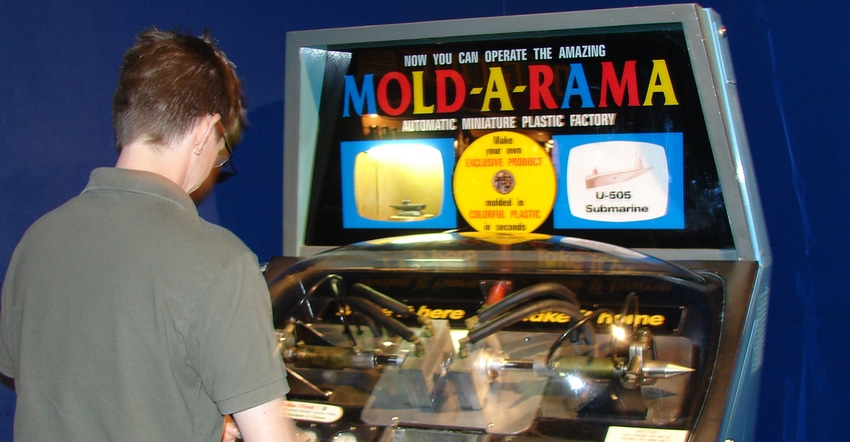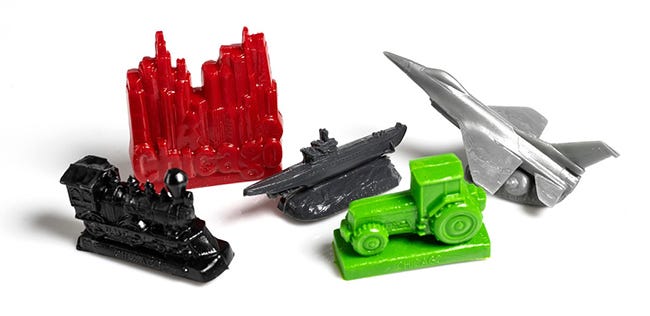The iconic machine that molds plastic souvenirs while you watch gets its own exhibit at Chicago's Museum of Science and Industry.
November 16, 2022

I’m not sure exactly how old I was but I do recall that I was at my local zoo when I saw a Mold-A-Rama for the first time. The imposing coin-operated machine promised to manufacture a plastic triceratops — an odd choice given the setting, but one that I didn’t question at the time — while I watched. Well, I was hooked by the “automatic miniature plastic factory.” And look where I am today. Yes, that would be a laughable use of foreshadowing in a screenplay, but what can I say? Anyway, this came to mind as I read about a current exhibit at the Museum of Science and Industry in Chicago — Mold-A-Rama: Molded for the Future.
|
Vintage plastic souvenirs made by Mold-A-Rama machines are on display at Chicago's Museum of Science and Industry. |
The exhibit, which runs through next year, features a “collection of popular, rare, and experimental Mold-A-Rama souvenirs from the past with their quirky colors, designs, and — of course — signature smell,” says the museum website. Several machines are scattered throughout the exhibit and around the museum so that you can take home a personal souvenir.
A brief history of Mold-A-Rama
J.H. “Tike” Miller of Quincy, IL, is credited with inventing the technology that would power the Mold-A-Rama. As Mental Floss tells the story, he had been making and selling plaster nativity scene figures, a business that took off when World War II broke out and the United States blocked imports of the figures from Germany, then the world’s top exporter of nativity decorations. Around 1955, Miller’s company started using plastic injection molding to produce the figures, cutting production costs and increasing output.
Mental Floss describes the technique, as follows. “The process melted polyethylene pellets at about 225 degrees and then injected the resulting liquid into a two-piece mold. Before the plastic could completely cool, a blast of high-pressure air would push any remaining liquid out a drainage hole in the bottom of the mold, leaving the sculpture hollow. Next, antifreeze was pumped inside and then drained to cool and harden the waxy plastic shell. The mold separated and the finished figure was ready. The whole process took less than a minute to complete.”
Miller tinkered with the concept and right around 1960 came up with the idea of converting his patented injection molding machine into an on-demand figure vending machine, writes Mental Floss. He worked with Automatic Retailers of America (which became Aramark) to develop the product and ultimately sold it the license to the technology.
A window into manufacturing
The Mold-A-Rama made a splash at the 1962 Seattle World’s Fair and gained even more prominence at the 1964 New York World’s Fair. A large part of the appeal, as Atlas Obscura notes, is that it “gave customers insight into the product’s manufacturing as it was happening, decades before 3D printing.”
I don’t see Mold-A-Rama machines around much any more, but a few years back I did encounter one at Third Man Records, musician Jack White’s recording studio and cabinet of curiosities in Nashville. It was, not surprisingly, out of order, at the time. The machines are a prickly contraption. Mold-A-Rama machines hold a gallon of liquid plastic that must be continuously heated to 250°F, and on a popular day, a machine makes up to 150 figurines. What could possibly go wrong?
There are said to be some 100 machines in operation today at various locations around the country. Some of them are bound to work.
About the Author(s)
You May Also Like





